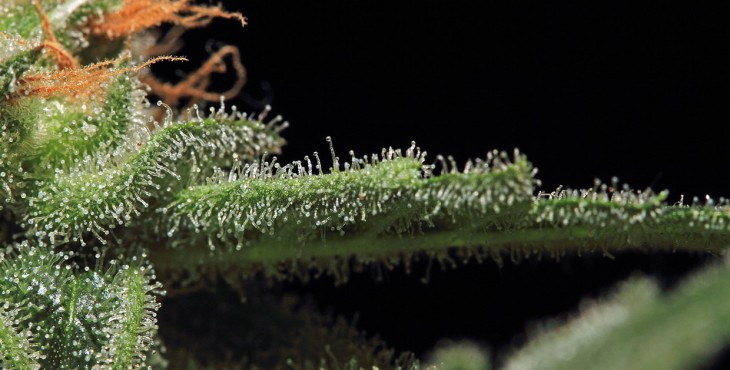Cannabigerol: Cannabinoids that are produced by the marijuana plant can be considered phytocannabinoids, since they are made by a plant. While cannabis is the most well-known cannabinoid producing plant, there are other plants that produce these chemicals as well, but in lesser concentrations and in different forms. Marijuana is most well-known for its production of THC, but it also has hundreds of other products, such as CBG which are vastly different.
You see, getting high is all about how a chemical interacts with proteins in the brain and throughout the body. Several factors such as affinity for a given receptor determine how a cannabinoid interacts with the body. CBG, unlike THC and other cannabinoids has a high affinity for a2-adrenergic (adrenaline producing) receptors as an agonist, with moderate affinity as an antagonist for another receptor called 5-HTa, low affinity for CB1 receptors and little being known about its interaction with the CB2 receptor.
The adrenergic receptor is similar to the CB receptors and is equally well dispersed. They are found in three variations in humans in the: brainstem, midbrain, hippocampus, hypothalamus, spinal cord, cerebral cortex, cerebellum, septum, olfactory system, thalamus, cerebellar perkinje layer, amygdala, dorsal root ganglia, basal ganglia and central tegmentum.. That is a lot of words for basically everywhere in the central nervous system.
In practice, chemicals that are agonist of these receptors are used as sedatives, muscle relaxants and pain relievers because of their interaction with the central nervous system. There is potential for similar uses in humans for CBG and chemicals like it which are already used as antidepressants, antihypertensives and other drugs. CBG might be used to replace these medicines since it has a higher affinity for the receptor, and less negative interaction with other biochemical cascades than the traditional medicines.
Already CBG is known for its ability to help with intraocular pressure felt by those suffering from glaucoma. Glaucoma is caused by various muscular problems which lead to a lack of drainage of fluid in the front of the eye. CBG relaxes muscles in the eye and allows the fluid to drain more efficiently. On top of that it can treat inflammatory bowel disease.
This chemical has complicated and diverse effects that are the perfect example of why it is so hard to determine the truth about the effects of marijuana. More studies will need to be done on this chemical, and given the pharmaceutical industries keen interest in making products that mimic cannabinoids, they are already doing the work. Sometimes they aren’t all that evil.









